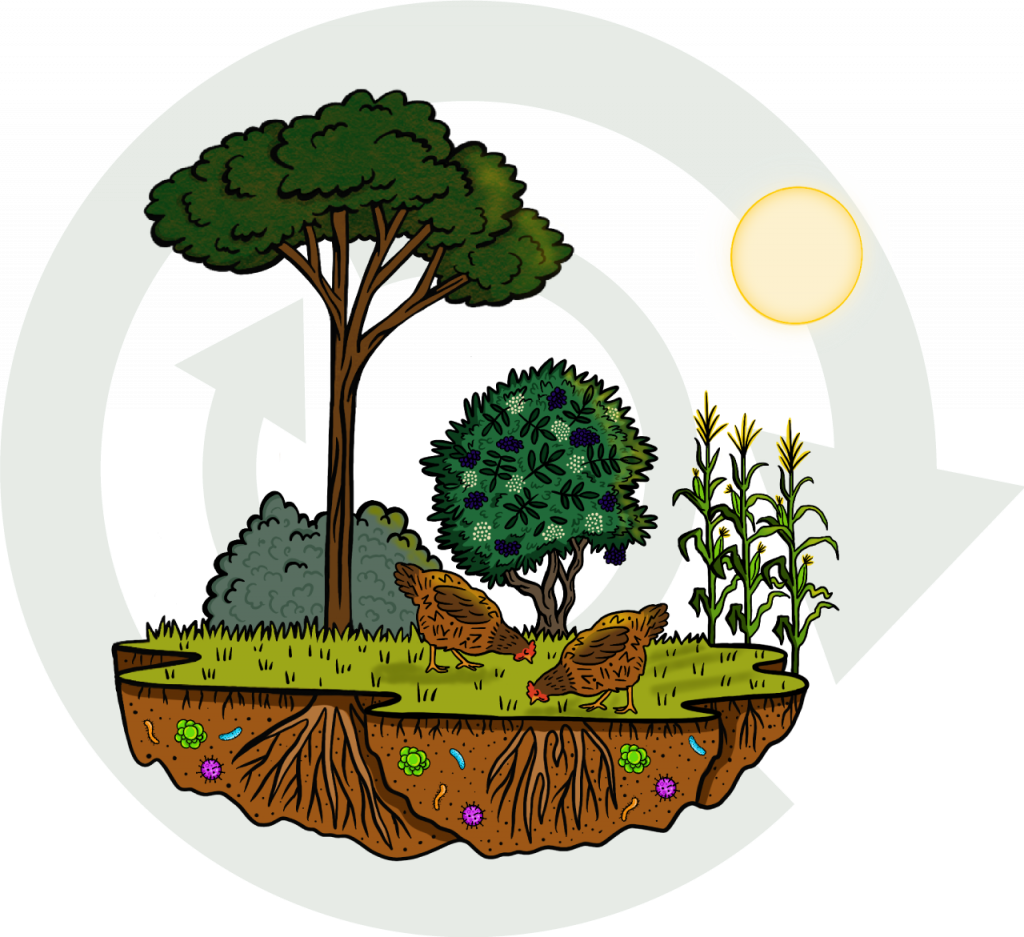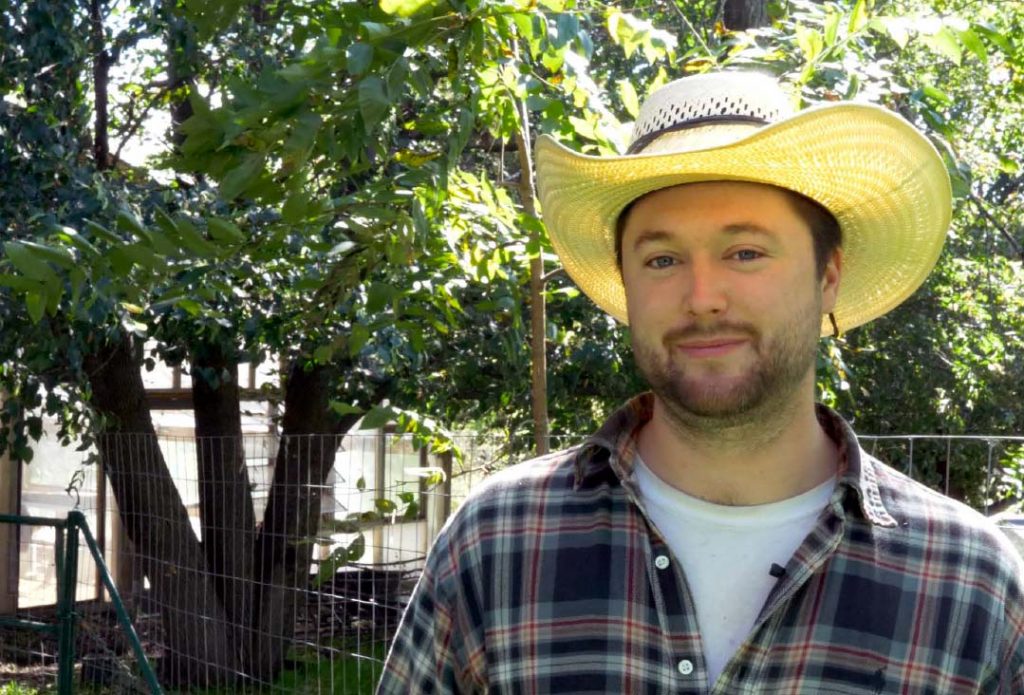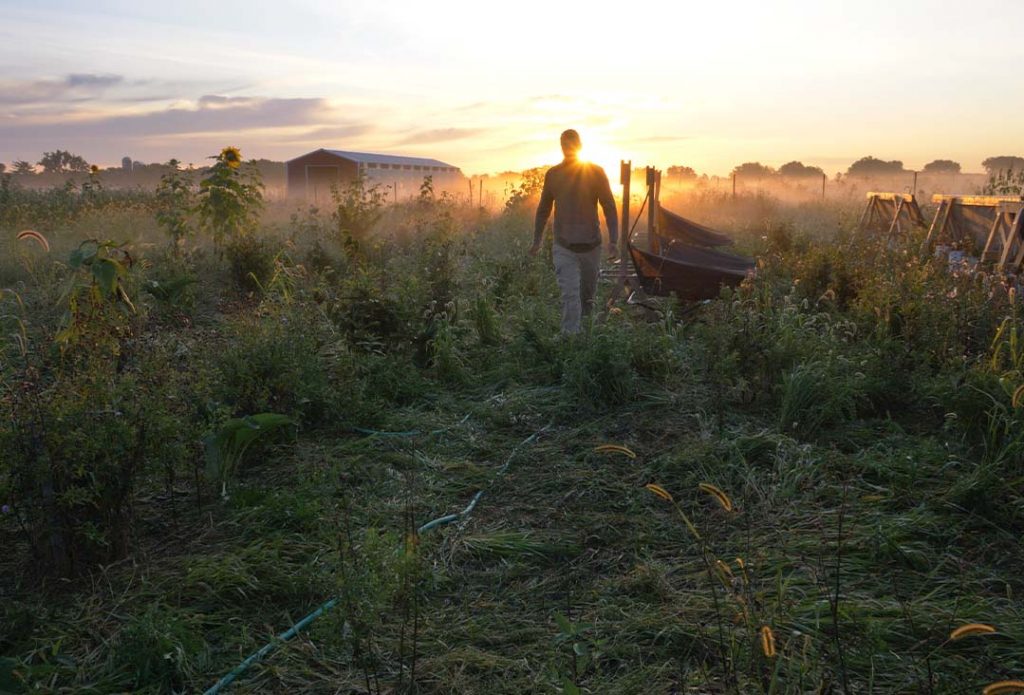
Biodiversity combined composted poultry manure applications has shown to produce soil carbon gains of 1.0 ton/acre/year over a 10-year period.
Above ground, perennial crops and annual crop rotations ensure diversity and biosecurity.
Below ground, biodiversity enables every microbe to fill a niche in the food web — fungi, algae, bacteria, earthworms, termites, ants, nematodes, dung beetles, etc.
Biodiverse ecosystems efficiently cycle carbon and thereby produce livestock and yields that are healthier and more abundant with every passing year.
“ Regeneration requires a four-dimensional approach because for a system to be economical, it must be ecological.
For a system to be ecological, it must be social, because ecology is what humans make of it. “
~Reginaldo Haslett-Marroquin
A 4DPOV (four-dimensional point of view) takes in Social, Economic, and Ecological criteria

People are the key to systems change. Without a happy and healthy farming community and workforce, there is little hope of seeing the changes we need in the US food and agriculture industries. Our theory of change is centered on designing a system-level strategy for peoples’ engagement.
Indicator: Ownership, governance, and control of the system’s infrastructure is in the hands of the people who work in it.
Verifier: Leadership that represents the workforce relative to its ethnic populations.
Each farm is designed to integrate perennial native crops with annual crops to build the soil and resiliency of its operation and surrounding community. Perennial crop infrastructure can buffer the impact of climate change.
Indicators: Return of wildlife; soil rich in minerals and organic matter.
Verifiers: Healthy chickens and bigger yields.


Systems run on circular economics. The chicken is at the center of the farm economic cycle, but the chicken also supports stacked enterprises like hazelnut and elderberry production. These crops provide additional revenue streams for farmers while delivering positive ecological outcomes.
Indicator: Farmers have more time to spend with their families and loved ones.
Verifier: Healthier farmers, food workers, animals, consumers, ecosystems.
The spiritual connection guides us in stewarding the land with passion, gratitude, and dedication.
Indicator: Farmers, food workers, and consumers enjoy a better sense of well-being.
Verifier: Vibrant communities.


A regenerative agriculture industry alliance for thriving businesses, people and planet.